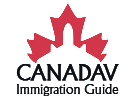A Step-by-Step Guide for International Students
Canada is home to 21 of the 500 best universities in the world and 32 of the top 1000 universities. In 2018, Canada was home to 572,415 study permit holders.
Canada offers some of the best study programs in the world and offers some of the world’s leading research facilities and academic institutions.
If you are planning to study abroad, Canada should be at the top of your list. Read ahead for a step-by-step guide to applying for a Canada study permit.


